The chin provides harmony and
character to the face. A strong chin or prominent jaw
line is considered to be aesthetically pleasing,
especially in males. When chin surgery is indicated,
whether by anterior horizontal mandibular osteotomy (AHMO)
or by alloplastic implant augmentation, it can create an
aesthetically pleasing facial contour and establish
proportionate facial height. In addition, the AHMO can
improve obstructive sleep apnea by elevating the hyoid
bone.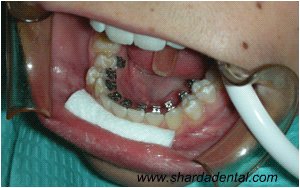
Most genioplasty procedures are done to improve the mandibular profile in order to obtain a more natural profile. Genioplasty can shorten or lengthen the lower third of the face. Facial asymmetry may be corrected by rotation of the chin-point to coincide with the midline. The advantages of osseous genioplasty are versatility, reliability and consistency in correcting problems in the sagittal and vertical planes to achieve greater chin projection. In order to be able to make an appropriate recommendation, the correct preoperative workup should be performed, including soft and hard tissue analyses. Ideally, cephalometrics and video cephalometric predictions would also be performed.
Anatomy and Analyses
It is important for the surgeon to be familiar with the classic soft tissue analysis and diagram of facial proportions. The size, shape and position of soft and hard tissue can enhance facial harmony and symmetry. The relationship between soft tissue and bone is important for planning the bony chin correction. For chin advancement, the bone to soft tissue proportion is 1:0.8, meaning that 1 mm of bony change is associated with 0.8 mm of soft tissue change.
The face can be divided into upper, middle and lower thirds. The upper third of the face spans from the hairline to the glabella; the middle third from glabella to subnasale; and the lower third from subnasale to menton. The lower third of the face can be further divided into an upper half (Sn to vermilion of the lower lip) and a lower half (Me to vermilion of the lower lip). The face is "balanced" when the three thirds are of similar height. Cephalometric analysis ensures that skeletal and occlusal disparities are identified and can be corrected before or at the same time as a genioplasty.
Many patients that complain of a small chin truly do not have microgenia.
They often have a true deficit of the mandible in the sagittal plane, which can be a class 2 malocclusion (retrognathia) or normo-occlusion (retrogenia). Retrognathia is ideally corrected with a bilateral sagittal split osteotomy (BSSO); however if the discrepancy is small, advancement genioplasty may sufficiently camouflage the facial profile into an orthognathic appearance. Retrogenia (chin point deficiency in the setting of a class I occlusion) and mild retrognathia (<3 mm) are ideal cases for a genioplasty. It is important to understand the relationship of the dentition to the chin point. The boney chin point should be about 2 mm posterior to the labial surface of the mandibular incisors. This will help maintain a natural labiomental fold.
The position of the labiomental angle is paramount and profoundly influences the aesthetic outcome. Cephalometric analysis helps the surgeon to plan the operative procedure. The treatment plan is based on incorporation of these data into clinical assessment that will facilitate a postsurgical profile that is esthetically pleasing.
Perceived Chin Abnormalities Due to Anomalies of The Maxilla
When facial analysis identifies disharmony within a patient's profile, the surgeon must determine whether there is an underlying occlusal and skeletal deformity or merely a poorly or over-projected mentum. True maxillomandibular discrepancies should be addressed with orthognathic surgery.
In the case where occlusion is stable and a small mandibular deficiency exists (retrogenia), an isolated mandibular sagittal deficiency may be a candidate for an AHMO.
To highlight the importance of the correct diagnosis, one can take the common occurrence of a patient complaining of a "small chin." A recessed chin may be retrogenia or microgenia. An over projected chin may be macrogenia or prognathia. Micrognathia and macrognathia are rare. Prognathia and retrognathia more commonly contribute to chin point abnormalities.
In the setting of a patient complaining of a small chin, the lateral profile should be evaluated. Concavity or convexity in conjunction with the proportions of the middle and lower third of the face should be considered in the planning. The maxilla should be evaluated. If the maxilla is set appropriately in the sagittal plane and there is mild retrognathia (<3 mm) or retrogenia, then a genioplasty is appropriate. However, if a maxillary developmental dysplasia is present, a formal orthognathic work-up should be done.
In contrast, patients complaining of a "prominent chin" often have pseudomacrogenia. These individuals may have maxillary sagittal hypoplasia, which manifests with a retruded upper lip, a midfacial concavity or deficiency, and a chin that may appear prominent in the sagittal plane. Since the true etiology is maxillary hypoplasia, the corrective procedure would be a Le Fort I osteotomy to advance the maxilla anteriorly to coincide with the chin point. A pitfall would be for a novice surgeon to perform a genioplasty to set the chin point back to coincide with the maxilla.
In maxillary vertical deficiency, the patient presents with pseudomacrogenia due to the counterclockwise rotation of the mandible. In this case, the chin is accentuated and appears larger than normal. Patients with this condition have a short lower third facial height and present with poor maxillary tooth show at rest and when smiling. When the mandible is placed in the normal centric relation, the chin point increases in the sagittal plane. Maxillary vertical height correction will allow for a more natural position of the chin and only then can a decision be made on the need for genioplasty.
Maxillary vertical excess may manifest as pseudomicrogenia due to the excessive downward growth of the maxilla causing a clockwise rotation of the mandible. In such cases, the rotation of the mandible results in the appearance of a small chin due to poor projection of the chin in the sagittal plane. The patient will likely have excess gingival show, a long lower third facial height and mentalis muscle strain from the forces needed to close the interlabial gap. The treatment for this type of facial anomaly may be to reposition the maxilla superiorly, particularly in the posterior area.
Maxillary sagittal hyperplasia is extremely rare. Patients may complain of a small chin as well. Once again, this is most likely a case of pseudomicrogenia, where the chin appears relatively small due to the prominence of the maxilla in the sagittal plane. These patients will have a convex facial profile associated with maxillary protrusion and an acute nasolabial angle. This form of microgenia can be corrected with repositioning of the maxilla, after which a decision can be made on the need for an adjunct genioplasty.
Evaluation of The Mandible
After a thorough investigation to rule out any maxillary discrepancies, the next step is to evaluate the mandible. For a patient with mandibular hypoplasia with either gross malocclusion or severe hypoplasia (greater than 4 mm), a formal orthognathic work-up is necessary. The risks of advancing or augmenting a chin greater than 5-6 mm include an unnatural appearance, a deep labiomental angle, and the risk of advancing the chin point past the lower central incisor. Severe mandibular sagittal hypoplasia is corrected with a BSSO, and genioplasty should be viewed as an adjunct procedure. Prognathia in the setting of class 3 malocclusion should be corrected by a setback with a BSSO. Isolated true macrogenia in the presence of a normal class 1 occlusion can easily be treated with a genioplasty, setting the chin point back and even reducing chin height if needed.
Indications for Isolated Genioplasty (Mentoplasty)
After careful scrutiny of the skeletal, dental and soft tissue structures, there exist certain cases that are amenable to isolated genioplasty. An isolated genioplasty can be considered if functional occlusion is present and the lower third profile has mild hypoplasia or hyperplasia in the sagittal or vertical plane. A sagittal hypoplasia (3-4 mm) in the setting of functional normo-occlusion with acceptable facial proportions is an ideal candidate for AHMO with advancement. A variation of the standard sliding genioplasty is the "jumping" genioplasty. The "jumping" genioplasty is ideal for sagittal advancement when vertical reduction is needed.
Patients who are considered for isolated genioplasty should have a good overall profile and occlusion. The surgical goals for these patients include creating an aesthetically pleasing facial contour and establishing proportionate facial height. Ideal candidates for a genioplasty are: (1) retrogenia, i.e., recessed chin point with class I occlusion; (2) mild retrognathia (<4 mm) with a functional occlusion; and macrogenia.
For example, in a patient that may have a long lower third of the face, a reduction genioplasty is performed to reduce the vertical dimension of the chin. Vertical reduction is done by performing a second horizontal osteotomy that is parallel to the first osteotomy, and a segment of bone is removed. Another indication for an isolated genioplasty may be a mild asymmetry, when the chin does not coincide with facial midline. An oblique triangular wedge of bone can be removed from one side and transplanted to the other side to correct chin asymmetry.
In all cases, the chin has to be rigidly fixed by miniplates, wire or screws. A variety of genioplasty is the "jumping" genioplasty. This type of procedure allows the surgeon to both increase the chin projection and shorten the vertical dimension of the chin simultaneously. After the osteotomy is completed, the basilar segment is elevated on top of the upper symphysis.
Genioplasty - Surgical Technique - Procedure
Genioplasty can be performed under local anesthesia with IV sedation or under general anesthesia. General anesthesia is more commonly used with this procedure.
Lidocaine with epinephrine is infiltrated along the
depth of the buccal vestibule.
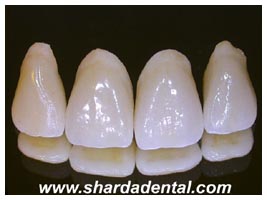 An incision is made in
the buccal vestibule, initially perpendicular to the
mucosa then perpendicularly to the muscle and bone. The
dissection is continued in the subperiosteal plane to
identify the mental foramen on both sides. After
identification of the mental foramen, the mental nerves
should be protected from both direct and traction
injury.
An incision is made in
the buccal vestibule, initially perpendicular to the
mucosa then perpendicularly to the muscle and bone. The
dissection is continued in the subperiosteal plane to
identify the mental foramen on both sides. After
identification of the mental foramen, the mental nerves
should be protected from both direct and traction
injury.
The osteotomy is done under the apices of the teeth and the mental nerve. Upon completion of the osteotomy, the chin is then rigidly fixated. A step-off (sharp edge) at the posterior part of the genioplasty should be avoided. The contour of the mandible should be smooth. There are a variety of techniques used for fixation of the chin including wires, resorbable or titanium bone plates. Closure should be done in multiple layers. The mentalis muscle must be reapproximated.
The muscle layer can also be reattached to the chin using Mitek anchors. We prefer using two Mitek anchors to secure the mentalis muscle to bone. Alternatively, simple reapproximation with two horizontal mattress sutures is acceptable. This prevents ptosis of the mentalis muscle. Nonfixation may result in a "witches chin." A compressive chin dressing is worn for 5 days postoperatively. The oral mucosa is closed with a running 3-0 chromic suture.
The advantage of this procedure is its versatility, reliability and reproducible correction of chin point discrepencies. The disadvantages, when compared to alloplastic augmentation, include increased operative time, bleeding and incidence of mental nerve hypoesthesia.
Dental Care
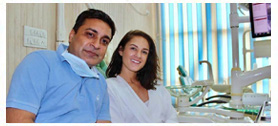
Regular dental care is an important part of oral health. Having healthy teeth and gums isn't a given, though.

Dental Tourism
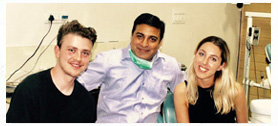
Our dental tourism packages, transport you to the world of royalty in all its regal splendor. An experience of a lifetime awaits you...

Brushing your teeth
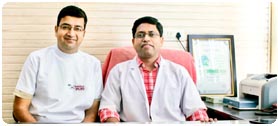
Your teeth are meant to last a lifetime! Tooth decay, or cavities, and periodontal disease, also known as gum disease, can ..

Oral Health Problems

If one or more of your teeth are missing, there are a number of ways to replace them. An alternative to bridges, partials or complete...

Patient Gallery
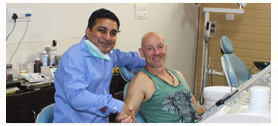
Here's just a few "before-and-after" photos of some of our most common procedures. Come in and see how we can enhance your smile.


